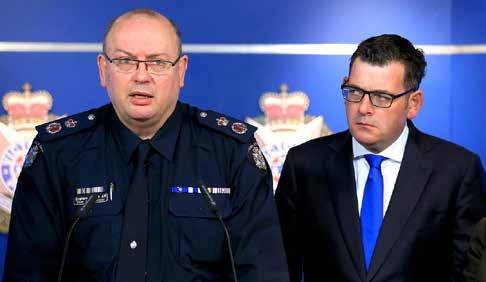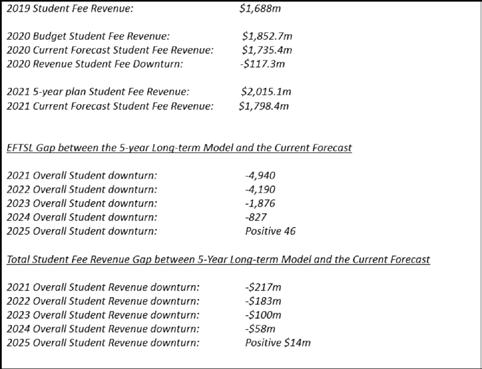CULTURE
Etymo-LG Baopu He traces the origins of LGs and LBs. Ahhh LGs and LBs. Little Girls and Little Boys. Every Asian in Sydney seems to know one, but no Asian in Sydney will admit to being one. When they’re not muzzing at raves decked out in Nike, they’re flexing their KPMG company badge at Sanctuary hotel while drinking more long islands than the zantac they took an hour before can handle. Either way, they’re back home before midnight, because at the end of the day, they’re still filial Asian children beholden to the whims of their overbearing immigrant parents. A lone Asian-Australian male with a fade cut who swears he’s “retired” from raving is called an LB. A group of them is called a UNSW BSoc. A group of LGs, on the other hand, is called an I Heart Uni photoshoot. The mythology surrounding LGs and LBs is endless and their presence in the Sydney Asian social scene is now inescapable. But where exactly did they all come from?
I start my search for the origins of the “LG” in the most obvious place I can think of - The Muzzing/Chopping Appreciation Society Facebook group. Founded in early 2015 and currently boasting over more than 75,000 members, this online community has been at the forefront of rave culture’s surging popularity amongst AsianAustralians youths. Muzzing is a dance style commonly done at raves which, on first glance, looks like a horny person directing traffic. It’s become associated with rave culture because its movements are well-suited to the beat heavy music of hardstyle, and MCAS is the place to be for aspiring muzz-kings and muzz-queens to show off their skills. So it makes sense that LGs and LBs originated there. Indeed, their explosion in popularity can be traced in the group to a video one of the moderators posted in early April 2016 of herself muzzing encaptioned “Calling out all LGs in the Southern Hemisphere #LGSTARTERPACK”. That video quickly amassed thousands of likes and then triggered a flood of muzzing videos captioned with “LG” or “LB”, each thumping beat matched with a confused commentator asking below “what the fuck is an LG?” The terms then spilled over from the group and, thanks to how interconnected the Sydney Asian community is, soon made its way to people like me who at the time at least had no interest in raving. In late April 2016, I used the word for the first time on Facebook messenger when I asked someone in a group chat “lol when did LG become a word?” While a recruitment post for MCAS moderators from June 2016 required prospective candidates to answer “what is an LG,” suggesting that the definition was still not widely known, by 2017 things had radically changed.
16
The rise of popular Asian-Australian facebook pages like “Sydney Asian Memes for Selective School Teens” and “LGs of Sydney and Melbourne” gave LGs and LBs digital immortality by way of means, thus introducing them to thousands of unenlightened, unsuspecting individuals. Before long, even the New York Times (yes, the New York Times) ran a feature article about them, making LGs and LBs possibly one of Australia’s most successful cultural exports in recent years. The rest is, of course, history. However, slang words don’t just pop up like this from thin air. A quick search in MCAS shows that low-scale usage of LG existed in 2015, suggesting that it had existed for much longer than the group itself. Intrigued, I look to Urban Dictionary for guidance, only to find that the top definitions for LG and LB are dated to November 2017 - long after the terms had become popular. But beneath the top definition of LG is a much older entry from 2009 which gives a very different meaning - a girl between the ages of 10-14 who adopts the mannerisms of someone much older. More interestingly, the definition notes that the term originated in the Canadian city of Vancouver. Much like Sydney, Vancouver has a huge Asian population. This couldn’t be a coincidence, could it? Were the two definitions somehow connected then?
If something has ties with the Sydney Asian community, chances are it involves our other major cultural institution - the selective school. With this hypothesis in mind, and knowing that selective school students have a long tradition of making videos to promote school events, I start looking on Youtube. I soon come across what I’d been looking for and I feel ecstatic. Techstatic to be precise. The jackpot was a video from March 2013 made by the prefects of Sydney Tech and St George Girls, two selective schools in Sydney’s south, promoting their school dance “Techstatic”. In it, a teenage boy tells his Asian-squatting mates in a thick ethnic Sydney accent that “he saw an LG the other day,” to which they respond by ritualistically chanting LG. The video gives no explanation as to what LG means, suggesting that the term had already become well-known in the vernacular of a small subsection of the Sydney Asian community by 2013. Following this lead, I reached out to Shabab Jahan, a friend of mine who graduated from Sydney Tech in 2013. Shabab tells me that he first heard the term LG in 2012, and that it started circulating just as the Asian teeny-bopper scene was dying out (RIP
Gatsby, striped and LAN Gaming). He notes that the term initially had no connections with raving and was more derogatory than it is today. However, Shabab admits that he doesn’t know where exactly the term came from, but only that he doesn’t think it originated at Sydney Tech (or more accurately, sincerely hope it didn’t). To find out more, he connects me with Johan BuiNguyen, a fellow graduate of Sydney Tech and the person who directed the “Techstatic” video. Johan tells me that he started using the word LG after hearing it used in videos made by a YouTuber called Chengman, whose skits often revolve around being an “Asian Gangsta” and picking up “LGs”. Chengman, as it turns out, is a ChineseCanadian from Vancouver. Eureka. I slowly begin to understand how all the pieces of this etymological puzzle fit together. The term LG originated in Vancouver as a way to describe a girl who acts or looks much older than they are. Over time, probably due to the large Asian population in Vancouver, and the fact that Asians often look younger than they actually are, the meaning of “LG” reversed and narrowed to refer specifically to Asian girls. The term then travelled from Canada to Australia thanks to a Chinese-Canadian Youtuberand was quickly picked up by Asian-Australian youths. Johan notes that teenagers from other highschools in the Bankstown area were also using the word in 2012, suggesting that it was adopted independently by many different people all at the same time. This is confirmed by Twitter, which shows a huge uptick in Asian-Australians (mostly in Western Sydney) using both “LG” and “LB” from 2012 to 2013. Interestingly, some mentions from the early days explicitly tie the terms to rave culture - a particularly amusing tweet reads “if i see any lgs post status about going defqon with FAKE ID, im fucking reporting you.” Strangely however, usage of “LG” and “LB” by Asian-Australians virtually disappears from Twitter after 2013, suggesting that the terms didn’t gain widespread usage amongst Asian-Australians at the time and were, like most fad words, on the road to being forgotten forever. But as we all know, LGs and LBs didn’t disappear. Somehow, they survived wandering in linguistic limbo for two years before being revived by MCAS in 2016. The question is, how? We’re now in the land of conjecture, and my guess is about as good as anybody’s. But my hypothesis is that after the initial hype created by Chengman, the terms lay dormant. Due to a lack of a high-profile platform like MCAS, they did not spread into the wider Asian community in Sydney or Melbourne. However, the chain of existence was never completely broken, and the terms were probably continuously used by Asians in the rave scene even though their usage had little exposure. Concurrently, the terms possibly quietly survived in some selective school circles in Sydney. Shabab remembers “LG” spreading from Sydney Tech to students from other schools at tutoring, meaning that a sizable number of
Sydney Asians had at least heard of the term despite never using it. Like those microorganisms which go into stasis during droughts and only revert back to their original metabolism when it rains, the initial burst of popularity gave “LG” and “LB” enough momentum to wait out a period spent in highly reduced usage until something like MCAS came along. And when it did, a group of people who had never stopped using the words were able to connect with a group of people who were already somewhat familiar with what they meant. Contrast this with what happened to LGs and LBs in their native Canada. While the term quietly lives on in its original meaning, the Asian dimension has been completely overtaken by ABGs and ABBs (Asian Baby Girls and Boys) - pieces of Asian-American slang from California. ABG and ABB have existed for quite some time as “streetslang,” but their explosion in online prominence only came after a video by Vietnamese-Canadian youtuber LeendaDProductions called “How to tell if you’re an ABG” went viral in early 2017. However, LGs and LBs had already become firmly ingrained in the Asian-Australian lexicon by that point thanks to MCAS and Facebook meme pages, who gave the terms a form of official online patronage which made them more resistant to external pressure. While it’s commonly thought that LG and LB are simply an offshoots of ABG and ABB, it seems that their popular online usage actually predates their American counterparts. Not even the takeover of Subtle Asian Traits by boba-addicted Asian-Americans could dampen their usage in Australia. For better or for worse, it seems that LGs and LBs are here to stay.
While talking to Shabab and Johan, I floated the idea to them that Sydney Tech could have played a big role in popularising LGs and LBs. If that was the case, I asked them how they’d feel. Johan tells me he’d feel “halfembarrassed, half-proud” while Shabab bluntly answers with “denial”. Even though the exact details of those early days will probably never be known, there is something that feels very fitting about this hypothesis. Remember the video they made to promote “Techstatic”? Turns out it was much less of a school dance and much more of a full-blown rave, complete with strobe lights, smoke machines and of course, gabbering. A school-sanctioned rave, at a selective school no less. When you think about it, the attendees there would have been the original LGs and LBs, in every sense of the word. Art by Ranuka Tandan.








